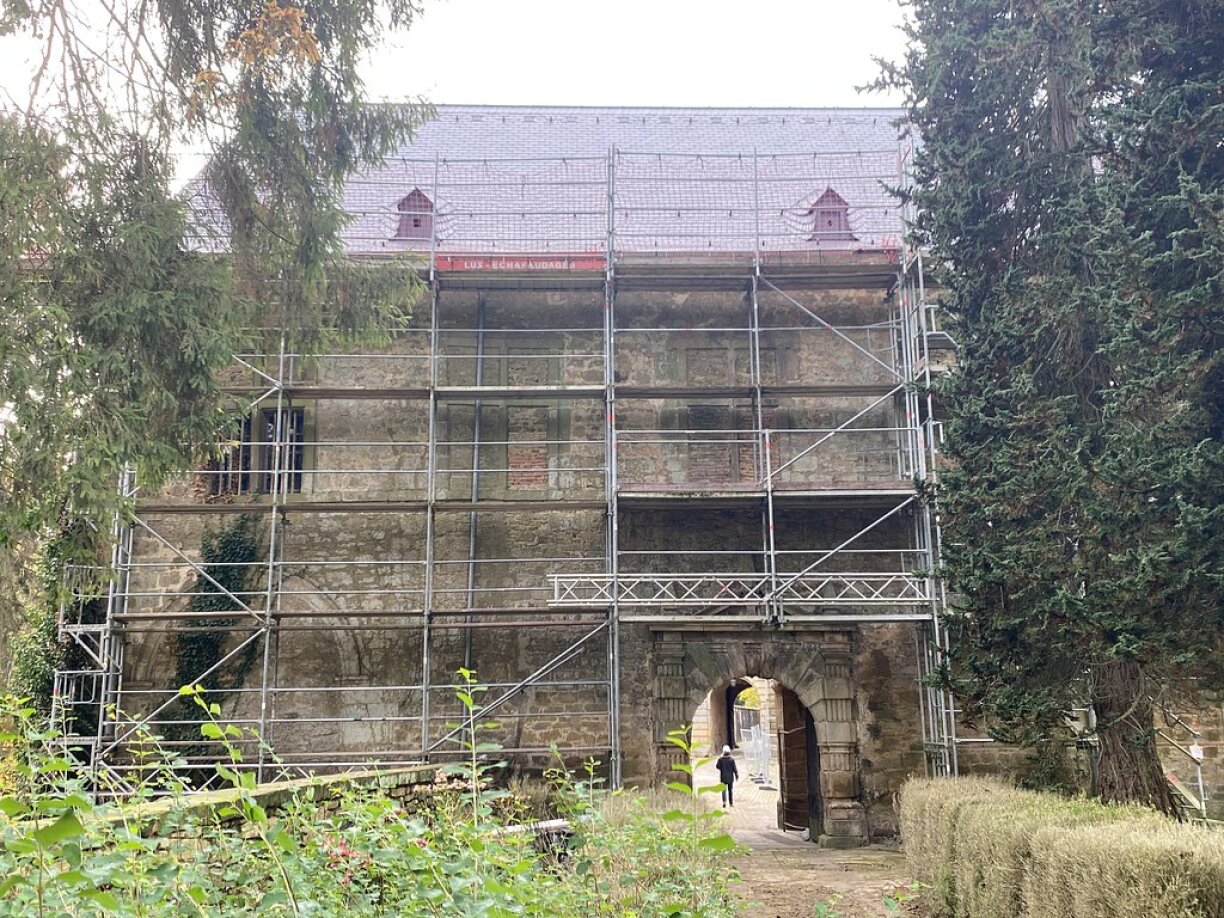
From above, the scale of the work is clear. The roof restoration is currently in full swing. While part of it has already been renewed, workers are still busy replacing sections elsewhere. According to Patrick Diederich, architect in charge of the project for the National Institute for Architectural Heritage (INPA), the structure had suffered the slow toll of centuries: the wood had warped, the masonry had shifted, and the roof had gradually sunk.
Diederich explained that preserving as much of the original material as possible was a key goal. He said that the massive oak beams supporting the roof date back to 1649, the castle’s construction year, as confirmed through dendrochronological analysis, a laboratory process that determines the age of timber by studying its growth rings.
Diederich noted that at one point, the restoration team even had to lift the roof structure entirely, stabilising it with support beams before rebuilding the cornices and strengthening the framework.
The restoration also includes modern updates to make the castle sustainable. The old oil heating system has been scrapped, and the team has decided against switching to gas. Instead, a pellet heating system is being installed in the former henhouse, which will also house new infrastructure such as electricity, water, internet, and drainage, Diederich said.
Work on the castle began in 2024, and it is scheduled to reopen to the public in August 2026. Once completed, it will feature guided tours, a museum, and cultural events.
Culture Minister Eric Thill emphasised that the renovated castle will be open to everyone, serving both as a historical museum and a multipurpose cultural venue.
The overall cost of the project is estimated at €3 million, with the roof renovation alone accounting for €400,000. The restored castle will stand not only as a cultural landmark but also as a testament to Luxembourg’s commitment to preserving its architectural heritage for future generations.